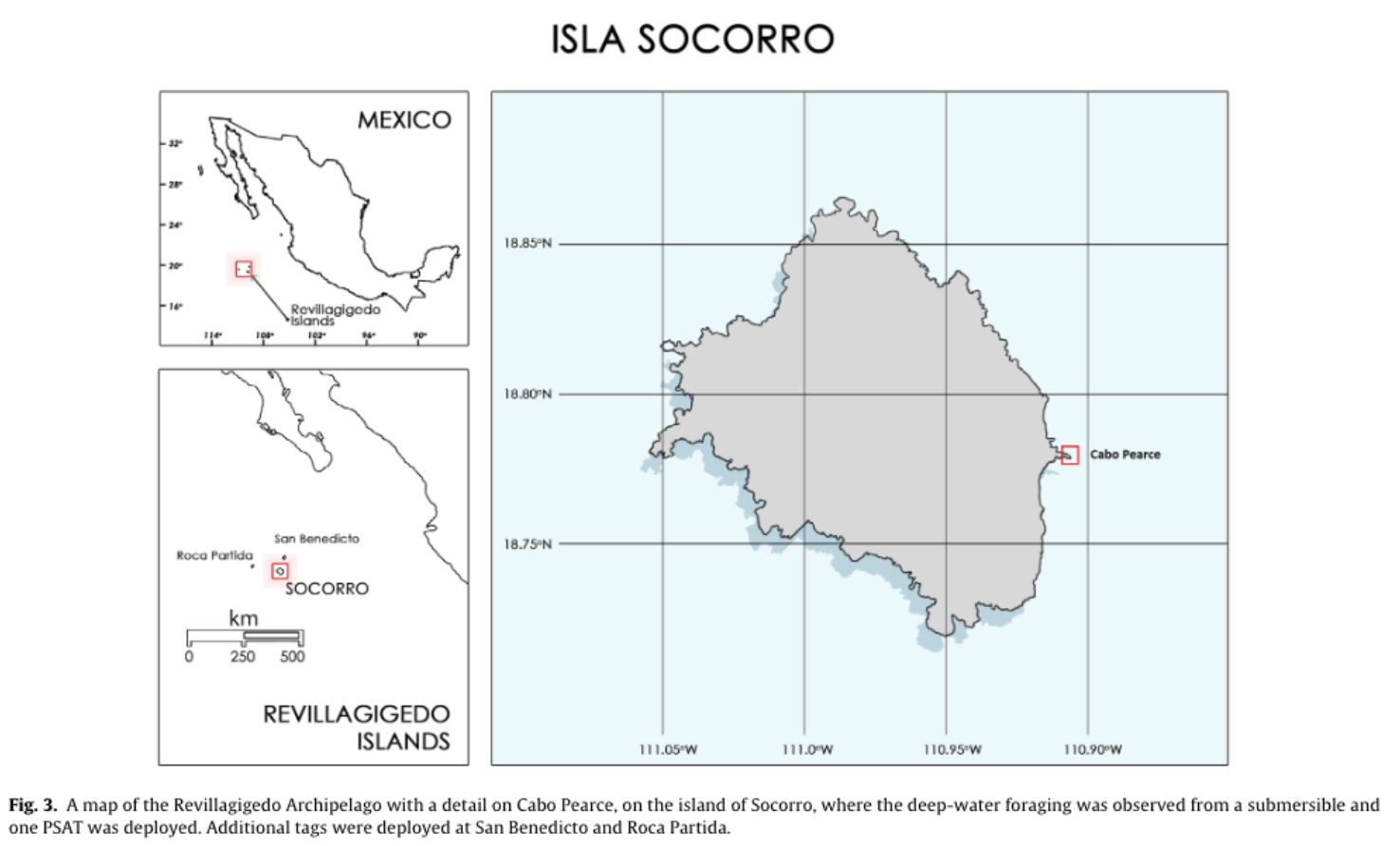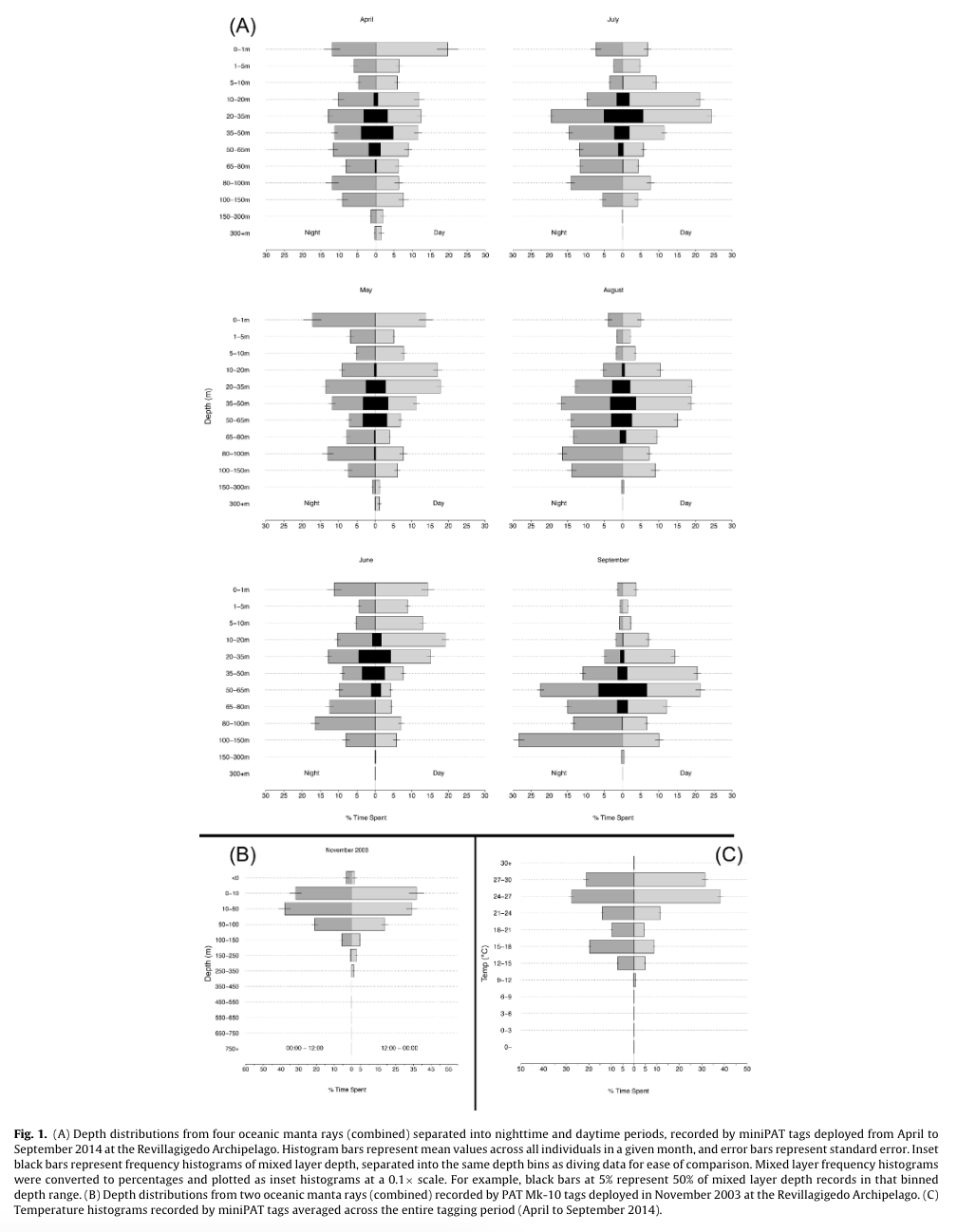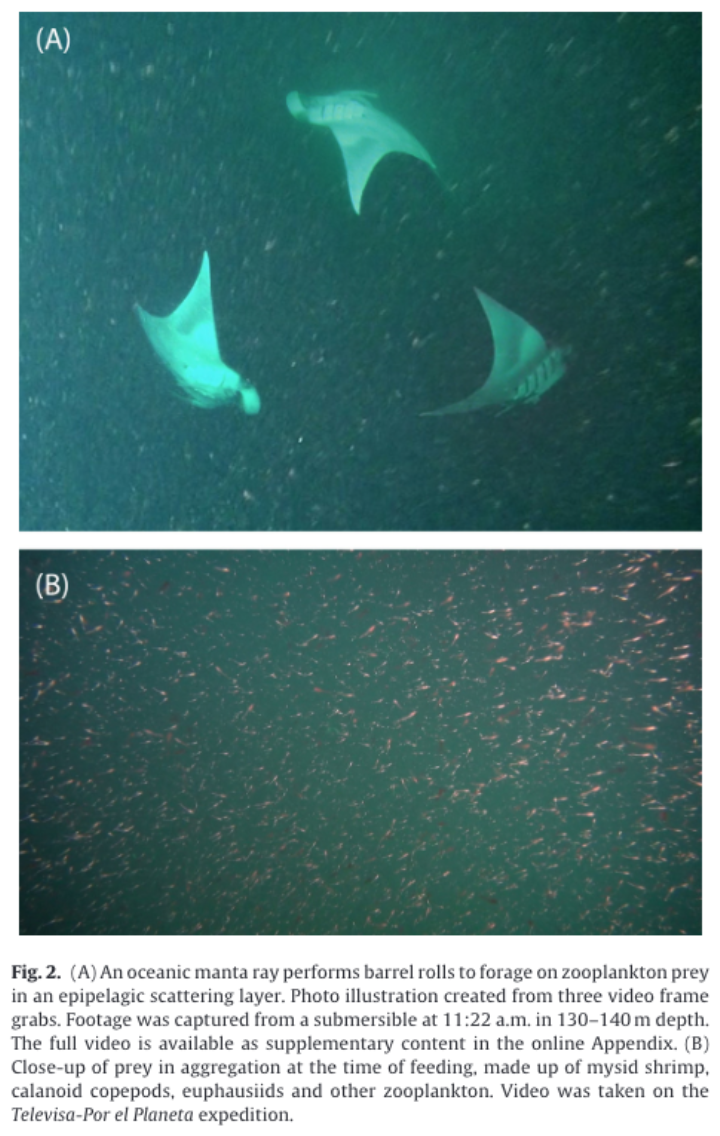Deep-water feeding and behavioral plasticity in Manta birostris revealed by archival tags and submersible observations
October 2016
Joshua D.Stewart, Edgar Mauricio Hoyos-Padilla, Katherine R.Kumli & Robert D.Rubin
Keywords: Manta birostris • Mobulidae • Foraging Ecology • Deep Scattering Layer • Diving Behaviour


Summary: Understanding the foraging behaviour of threatened species is crucial for conservation efforts, particularly in identifying critical habitats and spatial patterns. The oceanic manta ray (Mobula birostris), facing global threats from fisheries, has limited knowledge of its natural history and behaviour, hindering management. This study provides the first insights into the diving behaviour of oceanic mantas using satellite tags deployed on six individuals. Seasonal shifts in diving behaviour were observed, likely related to changes in zooplankton prey availability. Mantas spent significant time near the upper limit of the thermocline, where zooplankton aggregates. The data suggest a shift in foraging behavior from surface-associated to vertical migratory prey. Understanding these diving patterns can inform local management strategies to mitigate bycatch risks for this vulnerable species.
Abstract
“Foraging drives many fundamental aspects of ecology, and an understanding of foraging behavior aids in the conservation of threatened species by identifying critical habitats and spatial patterns relevant to management. The world’s largest ray, the oceanic manta (Manta birostris) is poorly studied and threatened globally by targeted fisheries and incidental capture. Very little information is available on the natural history, ecology and behavior of the species, complicating management efforts. This study provides the first data on the diving behavior of the species based on data returned from six tagged individuals, and an opportunistic observation from a submersible of a manta foraging at depth. Pop-off archival satellite tags deployed on mantas at the Revillagigedo Archipelago, Mexico recorded seasonal shifts in diving behavior, likely related to changes in the location and availability of zooplankton prey. Across seasons, mantas spent a large proportion of their time centered around the upper limit of the thermocline, where zooplankton often aggregate. Tag data reveal a gradual activity shift from surface waters to 100–150 m across the tagging period, possibly indicating a change in foraging behavior from targeting surface-associated zooplankton to vertical migrators. The depth ranges accessed by mantas in this study carry variable bycatch risks from different fishing gear types. Consequently, region-specific data on diving behavior can help inform local management strategies that reduce or mitigate bycatch of this vulnerable species.”
Author Affiliations
Scripps Institution of Oceanography, University of California
The Manta Trust
Pelagios Kakunja A.C.
Fins Attached
Pacific Manta Research Group, University of California Davis Bodega Marine Laboratory
Santa Rosa Junior College
Funded by
Marine Conservation and Action Fund by New England Aquarium
Carl F. Bucherer
Televisa
Aeromexico
Grupo Nacional Provincial
NOAA Nancy Foster Scholarship
National Science Foundation Graduate Research Fellowship
Additional support: David Connell, Mary O’Malley and Lupo Dion

